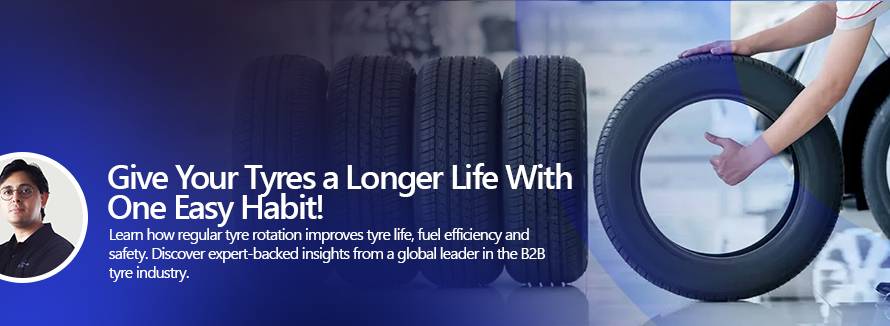The Tyre Industry: An Introduction 2023
The tyre industry, like any other industry, had pretty humble beginnings. However, they paved the way for revolutionary innovations. From the inception of pneumatic tyres to the introduction of radial and patterned tyres, each milestone reshaped the automotive landscape at a holistic level. Let’s take a quick journey through time, highlighting the significant achievements in tyre technology over the years.
Pneumatic Tyres: A Father’s Love Ignites a Great Innovation!
In the late 19th century, British veterinarian JB Dunlop embarked on a mission fueled by love for his son. Born prematurely and physically weaker than his peers, Dunlop’s youngest child faced limitations in movement and exercise. To remedy this, Dunlop conceptualized a solution – the pneumatic tyre. By infusing air into the tyre, Dunlop aimed to provide a smoother and faster ride for his son.
After several experiments, Dunlop successfully created the first crude pneumatic tyre prototype. The effects were transformative as air-filled tyres reduced road bumps and increased speed. This breakthrough led to the establishment of the Dunlop Pneumatic Tyre Co., Ltd. in 1889, forever altering the course of tyre technology.
A Showcase of Excellence: 300+ Brands in One Space
Spanning an impressive 45,000 square feet of floor space, the Shanghai World Expo Exhibition Center provided an exquisite canvas for over 300 esteemed wheel and tire brands. This colossal space comfortably accommodated the myriad exhibitors and enthusiastic visitors who flocked to see their wares.
Radial Tyres: A Revolution in Safety and Efficiency
In 1946, the French Michelin Tyre Company introduced the world to radial tyres, a groundbreaking innovation. Unlike their predecessors, radial tyres featured cord layers arranged like the earth’s meridians, enhancing wear resistance, puncture resistance, and overall cushioning. They also offered improved stability, safety, and fuel efficiency.
The advent of radial tires marked a revolution, extending tyre service life by 30 to 50 percent and reducing fuel consumption by 3 percent all the way to 8 percent. The reduced rolling resistance not only increased comfort but also broke through speed limitations, heralding a new era in tyre technology.
Patterned Tyres: Paving the Way for Safety
In 1904, Germany’s Continental introduced the first patterned car tyres, addressing a critical safety concern. Early tyres lacked tread patterns, compromising traction on slippery roads. Continental’s innovation significantly improved safety and performance.
Continental furthered its contributions with the introduction of detachable rims in 1908, streamlining tyre installation. Their foray into commercial vehicles and agricultural machinery tyres solidified the company’s position in the global tyre market.
China’s Tyre Legacy: From Double Money to Huili
The Chinese tyre industry made significant strides with the founding of Double Coin Tyre by Xue Fuji. In 1934, the Shanghai Great China Rubber Factory successfully produced China’s first automobile tyre, aptly named “Double Money.” This milestone laid the foundation for China’s emergence as a key player in the global tyre industry.
In the 1980s, spurred by Sino-German joint ventures, the production of passenger car radial tyres gained momentum. The introduction of the “Huili” brand marked a crucial development in meeting the growing demands of China’s burgeoning automotive industry.
Global Expansion: Goodyear’s Landmark Entry
In 1994, Goodyear Tyre became the first Western tyre company to invest and establish a factory in China. This move signaled a new chapter in the globalization of tyre manufacturing, demonstrating Goodyear’s commitment to the rapidly expanding Chinese market.
Conclusion
The tyre industry’s evolution, from Dunlop’s heartfelt invention to a worldwide presence, showcases a legacy of innovation and resilience. These milestones have not only enhanced the overall driving experience but also propelled the automotive industry into new realms of efficiency and safety. Even as we look back, we anticipate the many future breakthroughs that will continue to shape the way we commute on the roads of the world.





